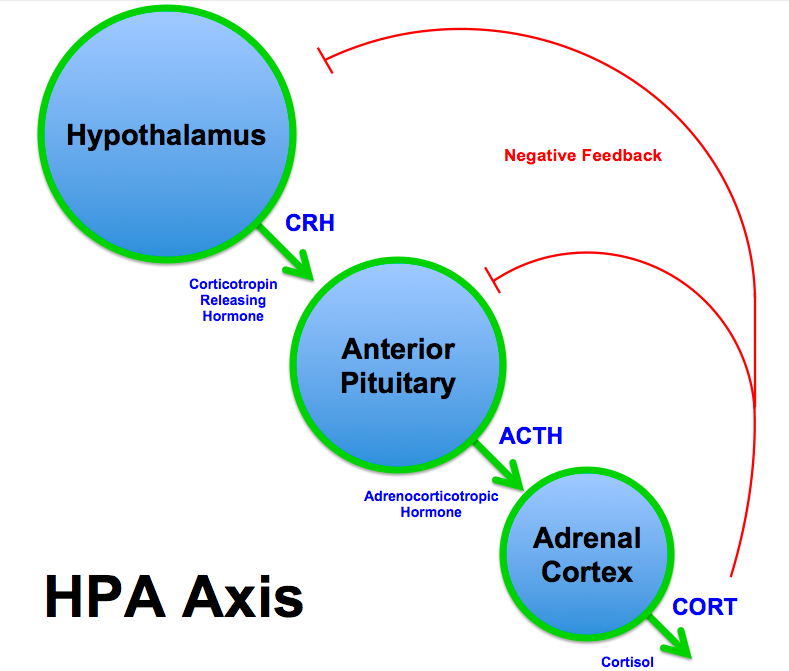Addison's disease pathophysiology
| https://https://www.youtube.com/watch?v=V6XcBp8EV7Q&t=86s |350}} |
|
Addison's disease Microchapters |
|
Diagnosis |
|---|
|
Treatment |
|
Case Studies |
|
Addison's disease pathophysiology On the Web |
|
American Roentgen Ray Society Images of Addison's disease pathophysiology |
|
Risk calculators and risk factors for Addison's disease pathophysiology |
Editor-In-Chief: C. Michael Gibson, M.S., M.D. [1]
Normal Physiology of Adrenal Glands
Hypothalamic–pituitary–adrenal axis
- The paraventricular nucleus of the hypothalamus, secrete corticotropin-releasing hormone (CRH).
- It stimulates the anterior lobe of the pituitary gland. to secrete adrenocorticotropic hormone (ACTH)
- ACTH, in turn, acts on the adrenal cortex, which produces glucocorticoid hormones (mainly cortisol in humans) in response to stimulation by ACTH.
- Glucocorticoids in turn act back on the hypothalamus and pituitary (to suppress CRH and ACTH production) in a negative feedback cycle.

Cortisol
| Harmone | Type of class | Function |
|---|---|---|
| Cortisol | Glucocorticoids |
|
| Aldosterone | Mineralocorticoids |
 |
Pathophysiology
Addison's disease occurs when the adrenal glands do not produce enough of the hormone cortisol and, in some cases, the hormone aldosterone. Causes of adrenal insufficiency can be grouped by the way in which they cause the adrenals to produce insufficient cortisol. These are adrenal dysgenesis (the gland has not formed adequately during development), impaired steroidogenesis (the gland is present but is biochemically unable to produce cortisol) or adrenal destruction (disease processes leading to the gland being damaged).
| Causes | Definition | Pathophysiology |
|---|---|---|
| Adrenal dysgenesis | Gland has not formed adequately during development |
|
| Impaired steroidogenesis |
|
|
| Adrenal destruction |
|
|